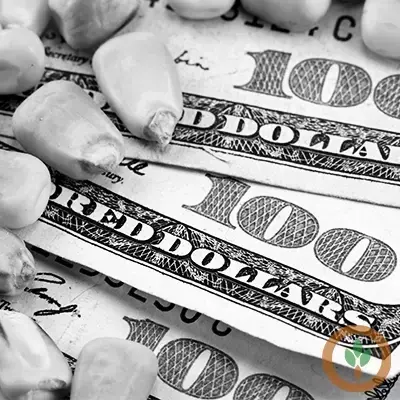Navigating the Shifting Tides of the Agricultural Landscape
In the ever-evolving world of agriculture, the closing grain and livestock futures on September 24, 2024, offer a glimpse into the dynamic forces shaping the industry. From the fluctuating prices of key commodities to the performance of the broader financial markets, this report delves into the intricate web of factors influencing the agricultural landscape.Unlocking the Potential of the Agricultural Sector
Grains and Oilseeds: Adapting to Market Shifts
The grain and oilseed markets have experienced a mix of movements, reflecting the complex interplay of supply, demand, and global economic conditions. Corn futures closed at $4.11 and 3/4, down 1 and 3/4 cents, indicating a slight dip in prices. Meanwhile, soybean futures saw a more positive trajectory, with November soybeans closing at $10.42 and 1/4, up 3 cents. This uptick in soybean prices could be attributed to factors such as changing trade dynamics, weather patterns, and the ongoing efforts to meet the growing global demand for protein-rich crops.Soybean meal and soybean oil, two key soybean derivatives, also exhibited divergent trends. Soybean meal closed at $323.60, down $2.90, potentially signaling a shift in the supply-demand balance for this important livestock feed ingredient. Conversely, soybean oil closed at 43.95, up 133 points, reflecting the increasing demand for vegetable oils in various industries, including biofuels and food processing.The wheat market, a staple in many regions, closed at $5.78, down 4 and 1/2 cents, hinting at the complex interplay of factors such as global production, trade policies, and consumer preferences that shape the wheat industry.Livestock and Dairy: Navigating Volatility
The livestock and dairy sectors have also experienced their fair share of market fluctuations. Live cattle futures closed at $183.20, down 5 cents, reflecting the ongoing challenges faced by beef producers, such as rising input costs and evolving consumer preferences. Feeder cattle, on the other hand, closed at $245.80, up $1.32, suggesting potential opportunities for cattle feeders to capitalize on favorable market conditions.In the pork market, lean hog futures closed at $82.12, down 17 cents, indicating a potential softening in demand or an increase in supply. This dynamic could be influenced by factors such as trade agreements, disease outbreaks, and changing consumer preferences.The dairy industry, represented by Class III milk futures, closed at $23.28, down 51 cents, highlighting the complexities of the dairy market, where factors like milk production, export demand, and government policies can significantly impact prices.Diversifying Portfolios: Commodities and Financial Markets
Beyond the agricultural commodities, the report also sheds light on the performance of other key markets. Crude oil futures closed at $71.56, up $1.19, reflecting the ongoing volatility in the energy sector, which can have ripple effects on the agricultural industry through factors like transportation costs and biofuel production.In the precious metals market, gold futures closed at $2,688.40, up $35.90, indicating continued investor interest in safe-haven assets amidst economic uncertainties.The Dow Jones Industrial Average, a barometer of the broader financial markets, closed at 42,208.22, up 83.57 points, suggesting a relatively stable performance in the overall equity markets.These cross-market dynamics underscore the interconnected nature of the agricultural sector, where global economic conditions, trade policies, and consumer preferences all play a crucial role in shaping the fortunes of farmers, producers, and investors alike.As the agricultural industry navigates these shifting tides, the need for informed decision-making, adaptability, and strategic foresight becomes increasingly paramount. By staying attuned to the nuances of the market, stakeholders can position themselves to capitalize on emerging opportunities and mitigate potential risks, ultimately strengthening the resilience and sustainability of the agricultural ecosystem.

